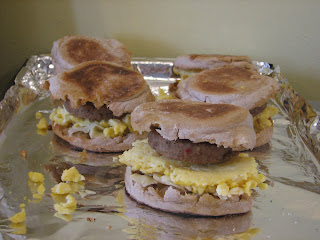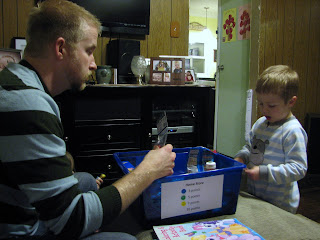
I guess I better start by answering the big question before I begin this tutorial. Yes, there is a reason I’m stocking up on maternity clothes- we are expecting our 4th child this November. Yep, the Cunningham family circus is growing yet again- and we could not be more thrilled (actually, not completely true- I would be more thrilled if I could just skip over this whole morning sickness thing). Anyhoo, let’s get going on this tutorial…
A couple notes first: This project can be done using a regular sewing machine, but can I just give a little shout out to my new best friend- my Juno by Janome SERGER!! This thing is the coolest toy I’ve ever owned! I could not believe how quickly and wonderfully this thing works! If you’re looking to get more serious about sewing clothes and other goods for your family, this is the perfect investment! A serger will help you create commercial-quality clothing easily and quickly! I cannot say enough….but we must move on!
A couple notes first: This project can be done using a regular sewing machine, but can I just give a little shout out to my new best friend- my Juno by Janome SERGER!! This thing is the coolest toy I’ve ever owned! I could not believe how quickly and wonderfully this thing works! If you’re looking to get more serious about sewing clothes and other goods for your family, this is the perfect investment! A serger will help you create commercial-quality clothing easily and quickly! I cannot say enough….but we must move on!

Here’s why I decided to make my own maternity clothes this time. Unfortunately, after baby #3, Corey and I decided we were finished having kids and gave away EVERYTHING, large tub of maternity clothes included. But as God always does, He laughed at our plans. And He has since been so good to open our hearts to His plan for our family, and we are now beyond excited about accepting the blessing of children. So with the future of my childbearing firmly placed in God’s hands (and out of mine, where it never belonged) I may need some good maternity clothes lying around. ;)
I’m actually
 doing a tutorial now, I promise.
doing a tutorial now, I promise. What you need:
Regular pants, shorts, or skirt that fit you well pre-pregnancy
Stretchy fabric (I actually used some old t-shirts I got for $.65 ea. At Goodwill)

Machine & thread
What to do:
Cut your pants starting at the back right below the belt loops or about 1 ½ inches from the top. Then continue cutting across the front, slightly curving down toward the middle, cutting right across the middle of the zipper and back up to the other side, meeting up with the cut from the back.
Get your s tretchy fabric and cut a piece 45 inches by 8 inches. IMPORTANT: Look closely at your fabric and make sure the stretch runs right to left
tretchy fabric and cut a piece 45 inches by 8 inches. IMPORTANT: Look closely at your fabric and make sure the stretch runs right to left  and not up & down or the band will not hold properly.
and not up & down or the band will not hold properly.
Now take your fabric and fold it in half lengthwise. Wrap around your belly to see how long to cut your fabric. If you plan on getting bigger, allow some room for growth.
Find where you need to sew the two ends together and pin. Then sew. Now take your band and fit it around the cut waist of the pants. Pin and sew. That’s it! You’re done!

Since many of you may not be in the market for maternity clothes, pass this on to someone you might know who is- this DIY project could be a life-saver (at least a BIG money-saver)!

Thanks for reading! I’ve really been enjoying all the great feedback from the last few posts- keep it coming!
Sarah
Cut your pants starting at the back right below the belt loops or about 1 ½ inches from the top. Then continue cutting across the front, slightly curving down toward the middle, cutting right across the middle of the zipper and back up to the other side, meeting up with the cut from the back.
Get your s
 tretchy fabric and cut a piece 45 inches by 8 inches. IMPORTANT: Look closely at your fabric and make sure the stretch runs right to left
tretchy fabric and cut a piece 45 inches by 8 inches. IMPORTANT: Look closely at your fabric and make sure the stretch runs right to left  and not up & down or the band will not hold properly.
and not up & down or the band will not hold properly.Now take your fabric and fold it in half lengthwise. Wrap around your belly to see how long to cut your fabric. If you plan on getting bigger, allow some room for growth.
Find where you need to sew the two ends together and pin. Then sew. Now take your band and fit it around the cut waist of the pants. Pin and sew. That’s it! You’re done!

Since many of you may not be in the market for maternity clothes, pass this on to someone you might know who is- this DIY project could be a life-saver (at least a BIG money-saver)!

Thanks for reading! I’ve really been enjoying all the great feedback from the last few posts- keep it coming!
Sarah



 . My folded in half fabric only covered the bottom few inches of the board and will creat a little pocket to place additional items. So follow the same steps with your "pocket" fabr
. My folded in half fabric only covered the bottom few inches of the board and will creat a little pocket to place additional items. So follow the same steps with your "pocket" fabr




 individual sandwich in a paper towel and place it in a sandwich bag and place those in a gallon sized freezer bag. So when you're ready to eat, just take it out of the bag and microwave about 1 minute.
individual sandwich in a paper towel and place it in a sandwich bag and place those in a gallon sized freezer bag. So when you're ready to eat, just take it out of the bag and microwave about 1 minute. 




 finish.
finish.

























 picking out their items, and “paying” for them( check out the above photo to see a transaction in progress :)
picking out their items, and “paying” for them( check out the above photo to see a transaction in progress :)